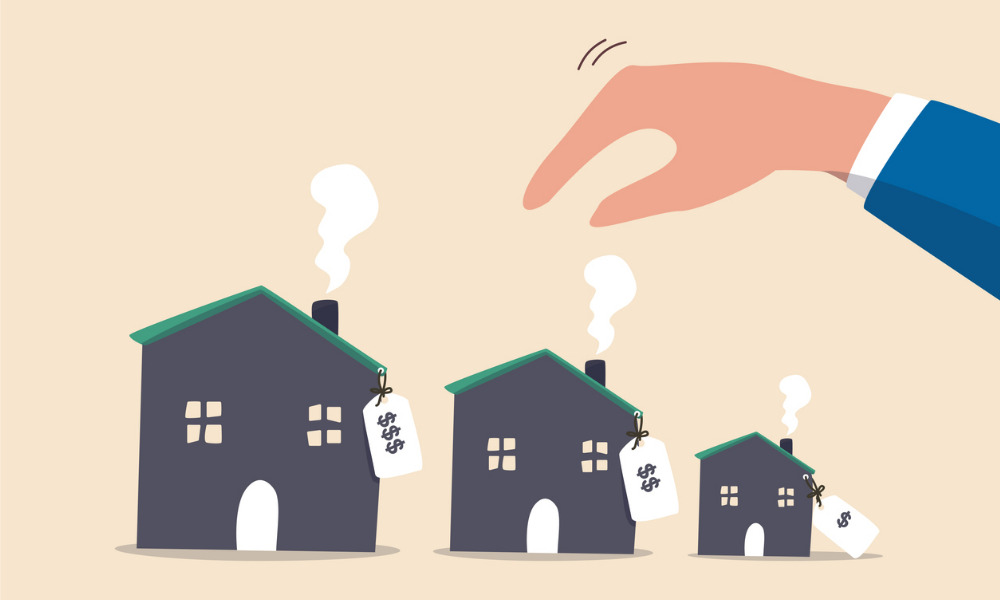NZ has huge rise in house prices, higher population growth, and larger drops in mortgage rates, RBNZ study finds

New Zealand had the biggest increase in house prices along with one of the highest rates of population growth and biggest falls in mortgage interest rates in recent years, according to research undertaken by the Reserve Bank.
Read more: House prices flatten with keen buyers still out there – C21NZ
The RBNZ study aimed to better understand the sustainability of house prices in New Zealand by looking at NZ’s housing market in comparison with 12 other developed nations between 1991 and 2021.
Authors Hamish Fitchett and Punnoose Jacob, of RBNZ, said the progression of New Zealand house prices was broadly in line with those in most other countries; but this changed after the Global Financial Crisis in 2008, interest.co.nz reported.
“Real house prices in New Zealand flattened for a few years following the GFC, before undergoing a rapid escalation,” Fitchett and Jacob wrote. “The rise in New Zealand house prices since 2008 exceeds that of all other economies in our sample. The upward surge in New Zealand house prices has also pushed New Zealand to the upper end of the cross-country spectrum with regards to two other key indicators of the housing market; the price-to-rent-ratio and the price-to-income ratio.”
Read next: How much are house prices rising by in New Zealand?
The authors observed a strengthening in housing demand along with increases in population and the decline in the interest rate costs of mortgages.
“New Zealand has been at the upper end of the range for much of the past three decades when it comes to population growth,” they said. “Albeit from low levels by world standards, New Zealand’s population, buoyed by high immigration, has grown rapidly. From mid-2008 to mid-2009, the [Reserve] Bank eased the official cash rate by 575 basis points. This in turn reduced the interest rate cost of mortgage debt to, what was at the time, historically low levels. After increasing mildly till about 2014, the mortgage rate declined continuously. By 2021, the New Zealand rate appears to have fallen the most in our sample; about 500 basis points.”
A comparison in the changes in population and mortgage rates since 2008 to the change in real house prices over the same period revealed two key messages, the authors said.
“Firstly, it suggests that house price increases after the GFC correlate stronger with population increases across countries while the corresponding correlation with declines in mortgage rates is weaker,” they said. “Secondly, not merely has New Zealand experienced the strongest house price increase since the GFC, it has also been accompanied by almost the steepest increase in population and the strongest decline in mortgage rates across our sample economies.”
Fitchett and Jacob said residential construction in New Zealand progressed at a rapid pace after the GFC – more rapidly, in fact, than in most other economies, interest.co.nz reported.
“However, New Zealand’s population has also grown at an increasing rate, again almost the highest in our sample,” they said. “This mismatch has constrained the availability of dwellings; the number of dwellings available per inhabitant steadily declined over most of the 2010-2020 period, and was the lowest among all the economies we consider.”
The relatively weak housing supply in New Zealand was accompanied by construction cost inflation that was high by international standards, the authors said.
“On the other hand, the demand-side of the New Zealand housing market was buoyed by robust population growth, and mortgage rates that experienced the strongest post-GFC decline among the economies we considered,” they said.
Fitchett and Jacob said the lower interest rate cost of mortgage debt, plus robust population growth, likely supported an increase in the demand for houses; while the combination of strong demand and limited supply generated an escalation of house prices in New Zealand, more so compared to other economies.
To sum up, the RBNZ report found that “the combination of relatively stronger demand-side factors and the constrained supply-side factors pushed New Zealand house price inflation to the upper end of the cross-country spectrum,” interest.co.nz reported.



